Julio Bermudez
The Catholic University of America, Washington DC
bermudez@cua.edu
Sandra Navarrete
Universidad de Mendoza, Argentina
docnavarrete@gmail.com
It is impossible to consider spirituality[1] in architecture without coming to terms with materiality. This presents us with a fundamental paradox: how can the most ethereal, evanescent, and ‘purest’ dimension of our humanity be at all connected to, even dependent on our most heavy, permanent, and measurable expression? Our inherited dualist narratives (i.e., Earth vs. Heaven, body vs. mind, flesh vs. soul) seem to preclude their reconciliation except during some momentary mystical or miraculous event or ritual.
But what our ‘classical’ philosophy (whether Platonic, Aristotelian, Thomist, or Cartesian) and Abrahamic religions present as incommensurable ontologies are not so in the eyes of alternative philosophies (e.g., Deweyian pragmatism, Merleau-Pontyan phenomenology, Whitehead’s process philosophy) and theologies (e.g., Buddhism, Taoism). From these perspectives spirituality and embodiment are not mutually exclusive or loosely ‘linked’ but an indivisible whole. This is not far fetched. Developments in neuroscience, psychoanalysis, psychology, and medicine tend to support non-dualist interpretations of the binary matterconsciousness. Needless to say that this non-dual perspective is not how we consider, discuss, or engage architecture today (Bermudez 2010). In this paper, we explore the relationship between architectural materiality and spirituality using this alternative viewpoint.
Our path must start by acknowledging that an incarnated spirituality (or spiritualized embodiment) assigns remarkable power and demands great responsibility to architectural materiality. Unfortunately, a survey of the most important texts and discussions on the built environment shows little attention to tectonics/materiality in this regard. How else can we read our discipline’s overemphasis of ‘space’ as the central concern of architecture —a bias inherited from Modernity (Giedion 1959, Zevi 1993), or our unrelenting focus on form and geometry —something long associated with ‘aesthetics’ and representation (i.e., symbolism, semiotics)? Even the current (and positive) interest in fabrication and construction in most architectural schools and the profession is failing to produce work, reflection or discourse on the spiritual dimension of tectonics.
Without denying the importance of spatial, formal, or constructivist interpretations of architecture, it is significant and timely – not to mention relevant to this symposium topic – to consider the role of architectural materiality in our spirituality. And in this regard, we need to be particularly concerned with the phenomenological production and reception of architecture rather than in historical, theoretical, compositional, or technical appraisals (Frampton 2001). After all, spirituality is ultimately lived and practiced in the present. This translates in considering how the material world that architecture brings forth invites existential and spiritual experiences. For example, how are materials, structure, detail, and craftsmanship lived as they interact with light, weather, the elements, living nature, time and, of course, people? Can/does tectonic presence transcend? Does the act of architectural makingconstructing affect / is affected by people’s spiritual beliefs and practices? If few scholars have studied architectural tectonics phenomenologically (Mostafavi & Leatherbarrow 1993), even fewer have considered its most profound, transcending implications (Pallasmaa 1996, 2009, 2011).
Given the short length of this paper, we are going to refer to Brutalism, undoubtedly the most tectonic of the architectural languages of Modernity, to illuminate the close bond between spirituality and materiality. Brutalism was conceived with a monumental and powerful materiality in contrast to the ethereal crystals of German Rationalism or the Corbusian white abstractions of the 1920 and 30s. Although the strong tectonic language of Brutalism extended worldwide, it is notable that it was the architectural works produced in the Americas that eventually led this movement: United States (Breuer, Rudolph, arguably Kahn), Brazil (Niemeyer, Costa), Argentina (Testa), and Mexico (Gonzalez de León).
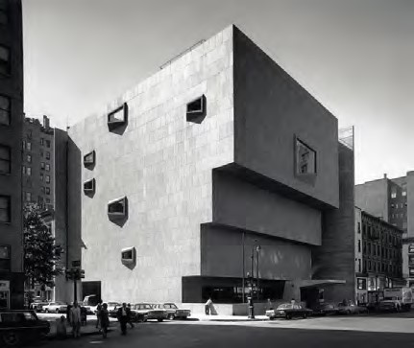
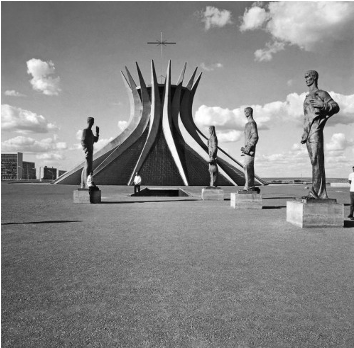
Fig. 1. Whitney Museum of American Art, New York.[2] Fig. 2. Cathedral of Brasilia, Brazil. [3]


Fig. 3. Banco de Londres, Buenos Aires.[4] Fig. 4. Yale Art & Architecture Bldg. [5]
Although Brutalism has conceptual and formal intentions, its manifestations were undoubtedly designed with the experience of the visitor/user in mind. Their powerful tactility, robustness, weight, ‘chiaroscuro’, scale, expression, and more awaken (if not demand) immediate
sensible responses that are not centered in the visual but in kinesthetics, touch, hearing, and even smelling. At the same time, the earthy and resilient nature of its materials (usually concrete), rooted heaviness, and untreated surfaces make Brutalist edifices age at a different rate than other constructions, and therefore be felt as belonging to another time if not timeless. What we have learned after half century of living with these buildings is that their architectural attributes elicit strong emotional responses from people. When unsuccessful,
Brutalist buildings are experienced as inhuman, existentially depressing, and utterly ugly (Nnadi 2016). At their best, they induce transcending experiences not by pointing at or representing some spiritual ‘other’ but by becoming themselves the locus of profound phenomenologies – as those that have experienced the Salk Institute, the chapel of Ronchamp, the monastery of La Tourette, or the Cathedral in Brasilia may attest. The capacity of Brutalist architecture to touch people’s soul for good or bad deserves careful phenomenological investigation.

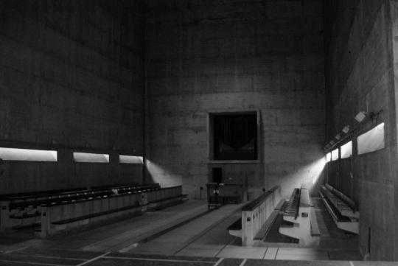
Fig. 5. Chapel of Notre Dame du Haut. Ronchamp.[6] Fig. 6. Monastery of La Tourette, France. [7]
A hypothesis explaining such reactions (the positive ones) may be found in how the Brutalist palette uses tectonics to make ‘opaque’ the otherwise ‘invisible’ existential atmosphere of our lives. Putting it differently, this architecture is constantly pulsating a transcendence that only awaits to be noticed in, with and through its brutal physical presence. Perhaps Brutalism succeeds because its materiality allows us to experientially retrieve something impossibly deep in our collective human memory, something that goes beyond styles and fashion. Didn’t Louis Kahn speak of the great importance of Volume 0 and ruins in architecture, thus suggesting that the best buildings relate us back to some primordial state of being and dwelling? If so, Brutalism may affect us because it phenomenologically touches those deep roots of our embodied soul. And in doing so, it achieves the miracle of making us feel the spirit in the flesh.
Utilizing Brutalism to cast light on the relationship between spirituality and tectonics finds more support in the following considerations:
- Brutalism begins during the consolidation of existentialism, when the actual worries and weight of postwar life trumped the intangible rationalist ideals of prewar Europe. The philosophies of Heidegger and Merleau-Ponty were also being developed and discussed during this time, and even though their theoretical consideration and impact in architecture would come later, the zeitgeist of the time was clearly pregnant with their existential phenomenology. Hence, we can say that Merleau-Ponty’s flesh of the world and Heidegger’s fourfold (Earth and mortals in particular) came together
and fed on a stoic interpretation of Sartrean existentialism to give birth to a powerfully physical (rather than spatial or formal) architecture. The result was a brutal architecture that demanded bodily and emotional responses that bypassed intellectual ruminations and engaged (for good or bad) the deepest dimensions of being.
- Successful expressions of Brutalism demonstrate that the materiality vs. spirituality dichotomy is misleading. It is deceptive to think that constructive subtlety, abstraction, and lightness are more likely to deliver spiritual experiences than tectonic starkness, literality, and heaviness. And Brutalism is not the only type of architecture that proves such oversimplification wrong. Let us consider two distinct ways to materialize spirituality (or ‘spiritualize’ materiality) used in Medieval Europe: Romanesque’s closed, dark, and dense spaces and squashed volumes versus Gothic’s high, ethereal and luminous structures. While each approach implies different phenomenologies of and paths to the sacred, both are able to conjure up the transcendent — their success depending on architectural quality and user/visitor’s idiosyncrasy and culture (to name three variables). The non-dualist or unifying understanding of spirituality-materiality we are advancing in this paper argues that both “heavy/substantial” and “light/diaphanous” architectures may invite transcendental and mystical experiences.
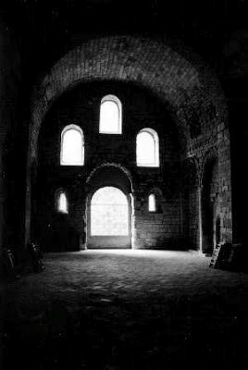
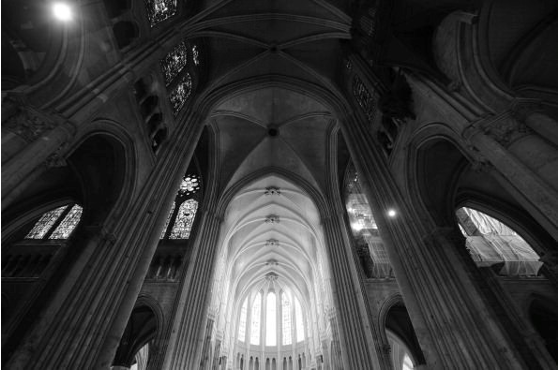
Fig. 7. San Juan de Peña.[8] Fig. 8. The Chartres Cathedral.[9]
- There is a growing interest (i.e., historical, theoretical) in Brutalist architecture around the world (Beanland 2016, Hardwood 2015, Henley 2017, May et al 2013, Pasnik et al 2015). On the positive side, many works of the period have been receiving growing appraisal in the past few years. An example is the national and international attention and consequent protection that the Brutalist buildings on the campuses of Universidad Nacional de Cuyo and Universidad de Mendoza (Argentina) are getting. On the negative side, many cities in the U.S. are questioning the quality and viability of what were once considered excellent manifestations of Brutalist architecture such as the FBI headquarter in Washington DC and Boston City Hall (Nnandi 2016).


Fig. 9. Universidad Nacional de Cuyo.[10] Fig. 10. FBI en Washington DC.[11]
Our considerations conclude establishing a link between Brutalism and recent minimalist trends with spiritual overtones. Perhaps Modern architecture of the 1950-70s was anticipating the most striking expressions of “phenomenological architecture” today as found in the works of contemporary architects Tadao Ando and Peter Zumthor. Consider Ando’s churches of the water and of light, and Zumthor’s Vals Thermes and Bruder Klaus Field Chapel. Can’t we see a Brutalist attitude in their highly tectonic architecture, albeit using more subtle, emotional, atmospheric, or crafted ways? The words of Ando in the context of his strongly tectonic oeuvre supports this argument: “rather than clinging to forms, I prefer spiritual and emotional content.”[12] And Ando and Zumthor are not the only ones. Other architects today are relating spirituality and materiality through strong tectonic means reminiscent of Brutalism, as scholars and professional publications are pointing out (Bartolacci 2016, Gatley & King 2016, Henley 2017).

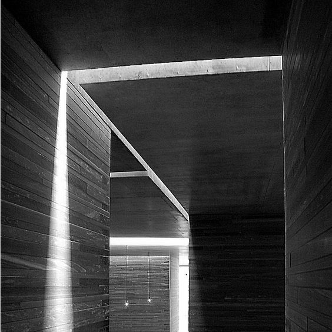
Fig. 11. The Church of Ligh, Japan.[13] Fig. 12. Vals Thermes, Switzerland.[14]4
References
Julio Bermudez. “Non-Ordinary Architectural Phenomenologies: Non Dualist Experiences and Husserl’s Reduction”, in Environmental & Architectural Phenomenology Newsletter (2010) Vol.21, No.2, pp. 11-15.
James Bartolacci.“7 Concrete Churches Resurrecting Brutalist Architecture” in Architizer, Dec 13 2016;
URL: http://architizer.com/blog/concrete-church/ (accessed 1/15/2017)
Christopher Beanland. Concrete Concept (London: Frances Lincoln Ld., 2016)
Frampton, Kenneth. Studies in Tectonic Culture. The Poetics of Construction in Nineteenth and Twentieth Century Architecture (Cambridge, MA: The MIT Press, 2001)
Elain Hardwood. Space, Hope & Brutalism (London: Paul Mellon Centre BA, 2015)
Julia Gatley and Stuart King (eds.). Brutalism Resurgent (New Yok: Routledge, 2016)
Siegried Giedion. Space, Time and Architecture (Cambridge, MA: Harvard Univeristy Press, 1959)
Simon Henley. Redefining Brutalism (London: RIVA Publishing, forthcoming 2017) Kyle May et al (eds). Clog: Brutalism (New York: Clog, 2013)
Mohsen Mostafavi and David Leatherbarrow. On Weathering. The Life of Buildings in Time (Cambridge, MA: the MIT Press, 1993).
Kojo Nnandi. “Is Washington’s Brutalist Architecture Making A Comeback?” in The Kojo Nnandi Show, Oct 27, 2016 (WAMU 88.5 FM Radio in Washington DC). URL: http://thekojonnamdishow.org/shows/2016-10-27/is-brutalism-back (accessed 1/8/2017)
Juhani Pallasmaa. The Eyes of the Skin: Architecture and the Senses (New York: John Wiley 1996)
Juhani Pallasmaa. The Thinking Hand: Existential and Embodied Wisdom in Architecture (New York: John Wiley & Sons, 2009)
Juhani Pallasmaa. The Embodied Image. Imagination and Imagery in Architecture (New York, John Wiley 2011)
Mark Pasnik, Chris Grimley, and Michael Kubo. Heroic: Concrete Architecture and the New Boston (Boston: the Monacelli Press, 2015)
Bruno Zevi. Architecture as Space (Boston, MA: Da Capo Press, 1993)
14 Peter Zumthor. Vals Thermes, Switzerland. URL: https://s-media-cacheak0.pinimg.com/564x/58/0a/c2/580ac2f9f692fca575af211b48a9a160.jpg (accessed 1/15/2017)
[1] We are using the definition of “spirituality” advanced in the ACSF website. URL: http://www.acsforum.org/definitions.htm (accessed 1/15/2017)
[2] Marcel Breuer. Whitney Museum of American Art, New York. URL: https://www.yatzer.com/MarcelBreuer-design-architecture (accessed 1/15/2017)
[3] Oscar Niemeyer. Cathedral of Brasilia, Brazil. URL: http://blog.espasso.com/oscar-niemeyer-15december-1907-5-december-2012/#1 (accessed 1/15/2017)
[4] Clorindo Testa. Banco de Londres, Buenos Aires. URL: http://cgaleno.blogspot.com/2013/04/clorindotesta-obituario.html (accessed 1/15/2017)
[5] Paul Rudloph. Yale Art and Achitecture building, New Haven, CT. URL: https://www.pinterest.com/pin/44754590020554402/ (accessed 1/15/2017)
[6] Le Corbusier. Chapel of Notre Dame du Haut. Ronchamp, France. URL:
http://www.utilityarchitecture.com/wp-content/uploads/2015/03/recogimiento.jpg (accessed 1/15/2017)
[7] Le Corbusier. Monastery of La Tourette, France. (accessed 1/15/2017) URL: https://ugc.kn3.net/i/origin/http://es.wikiarquitectura.com/images/5/5c/Conv_Sainte_Marie_iglesia_int.jpg
[8] Romanesque Monastery of San Juan De La Pena. Spain.
[9] The Chartres Cathedral, Frances.. URL: http://www.nybooks.com/wp-content/uploads/2014/12/restoreChartres.jpg (accessed 1/15/2017)
[10] Photos of Sandra Navarrete.
[11] FBI Headquarters in Washington, DC. URL: https://washington-org.s3.amazonaws.com/s3fspublic/809_Fbi_headquarters-3908.jpg (accessed 1/15/2017)
[12] Citation of Tadao Ando in URL: http://www.floornature.com/tadao-ando-chicago-home-4030/ (accessed 1/15/2017)
[13] Tadao Ando. Church of Light, Japan. URL:
http://static.wixstatic.com/media/3861c1_7c59211d9cf14e8892d65fef155d18de~mv2.jpeg (accessed
[14] /15/2017)



